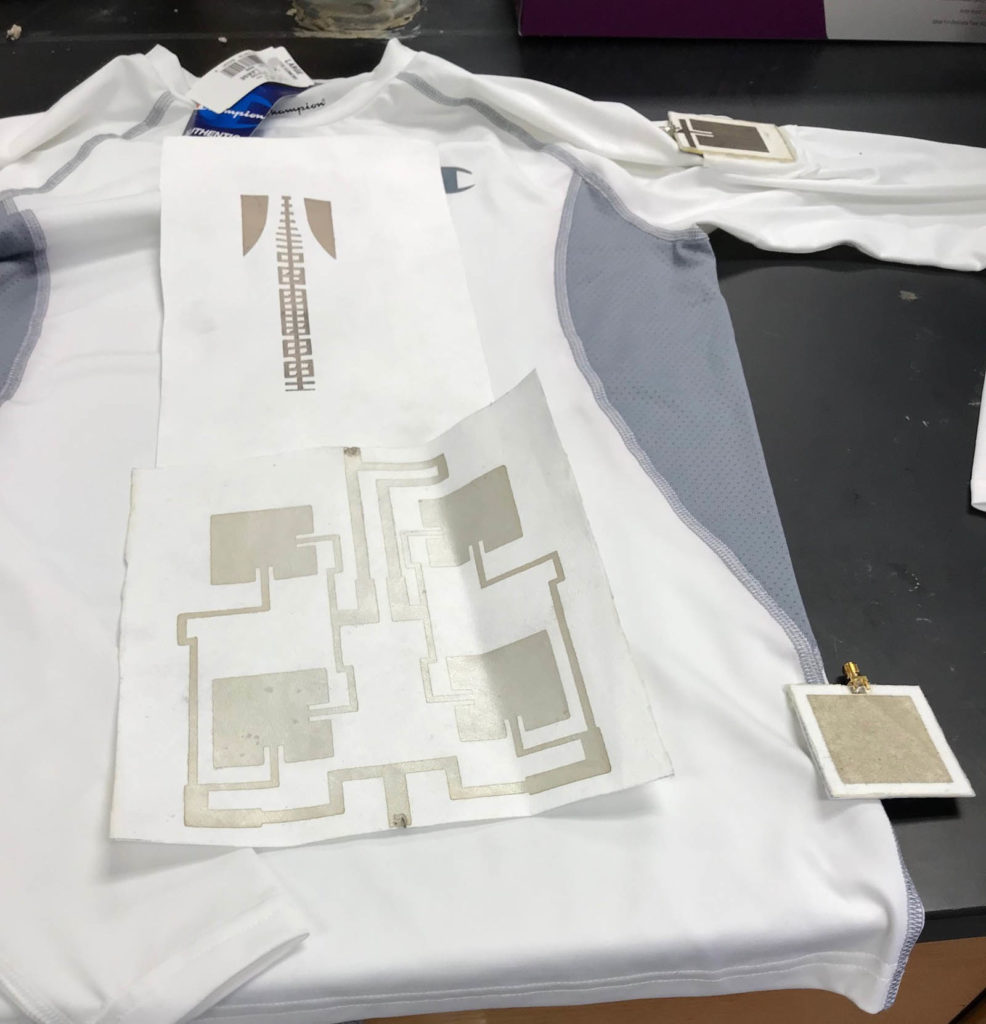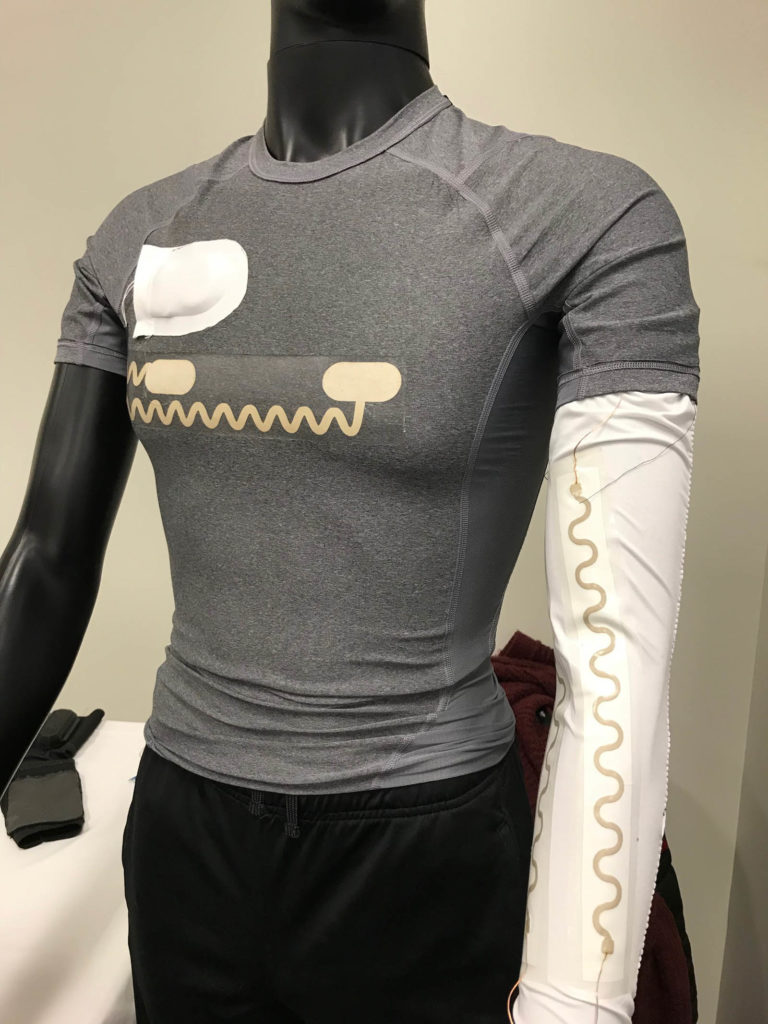
This year’s Smart Fabrics Summit zeroed in on the industry’s most important issues, building a new in-person event with more than 150 attending at North Carolina State University (NC State), its producing partner.
Elena Veety, education director and operations manager, ASSIST Center at NC State, described the university’s center headquartered at the university. However, it has several other partnering institutions, which support its mission to advance energy harvesting and storage, low-power sensing, low-power electronics, e-textiles, and system integration and data.
The center’s industry membership program offers directed research, use of its equipment and facilities, student internships and commercialization support, as well as a targeted rapid prototyping program. While much of the research underway has application in the health and wellness market for people, the center also does research in animal health, and in agriculture exploring “wearables for plants.”
“The integration of sensing in textiles is still a challenge,” Veety said, but the center’s researchers continue to have an eye on future developments. “Our vision is not just wearables, [but] being able to implement multi-modal data streams,” she said.
Assessing the industry
The Summit invested a good portion of its time in taking stock of the state of the smart fabrics industry. Dr. David Hinks, dean of the Wilson College of Textiles at NC State, moderated a panel that generated a lively conversation between the panelists and the audience.
Tanya Wade, entrepreneur intake administrator, Manufacturing Solutions Center, Conover, N.C., made note of the acute need to find workers. “All of our manufacturers that we work with, that’s the number one problem they face,” she said.
Audience members echoed the need for workers and other resources. “Where do you find the technicians?” one asked. “It’s going to take all of us—an army of all of us—to bring textile manufacturing back to the U.S.”
This points to the need for industry participants to assist each other. But how? Wade told the audience to “expect to be a resource,” and noted the importance of having industry participants “reach out and say what they need and what they have.”
Better use of new technology and automation was also discussed as a way to move the manufacture of smart fabrics more quickly into the mainstream. More sustainable materials and practices can help this effort, said Dr. Michael A. Saltzberg, global business director, Dupont Biomaterials, by moving from oil- and gas-based materials to agri-based biomaterials that the U.S. can provide.
“The world is moving toward more sustainable materials,” Salzberg said. This “de-fossilization,” or movement away from fossil-based materials, is particularly important. “I don’t think we’re going to recycle our way out of this. … The U.S. ought to focus on how to become the leader. Brands and consumers want this,” he said.
“The engine in the United States is small businesses,” Hinks believes, and can offer “tremendous opportunity for startup companies both domestic and for international businesses to invest here.” Once again, “The key is to have a talent supply,” he added.
Bringing industry participants together and getting the needed talent for that to happen involves degree programs and workshops, yes, but attracting talent should also start at the high school level. “NC State and the community college system can be a conduit for that needed supply of talent,” he said.

Making a stronger U.S. industry
The closing keynote address was a Q & A with Jennifer Knight, deputy assistant secretary for textiles, consumer goods and materials (TCGM), U.S. Dept. of Commerce. Dr. West posed the questions and turned first to continuing the discussion of workforce shortages and how to make the workforce grow.
“The kind of work going on at the local level is really where it’s at – where people get training, and then there’s a job,” Knight said. The $500 million Good Jobs Challenge has had more than 500 applicants. “That should go a long way toward strengthening the program.”
The loss of experienced workforce and industry leaders is also looming with many industry experts nearing retirement. “We need to develop the next generation of industry experts,” she said.
The question of the domestic production of PPE was, and still is, on everyone’s minds. West asked what the Biden Administration is doing to support the domestic production of PPE. Knight first thanked all those companies that pivoted to make it, adding that they “did a fantastic job.”
But the U.S. must work for a more sustainable public health supply chain, she noted, with the Made in America Office supporting that effort. However, the question is, she said, “Can anybody sustain a business just making PPE?”
When asked about the Biden Administration’s priorities for the industry’s future, Knight responded that the goals are to see the U.S. textile industry becomes stronger and more resilient. This involves supporting growth in the Western Hemisphere. It is also important, Knight said, to “find a way for our IP to stay home.” This means commercializing goods in the U.S. or with our allies.
Knight pointed specifically to several companies committed to development in Central America, including a multimillion-dollar investment by global yarn manufacturer Parkdale Mills in a new yarn plant in Honduras. This will help alleviate supply chain issues, support the local economy and encourage other manufacturers to open facilities closer to U.S. textile companies needing those products.
This raises the question of convincing an investor to pay for new equipment to scale up manufacturing, because the return on investment can take, in fact, many years. “That’s a tough problem,” she said, “But the success of one encourages others,” and once again pointed to the facility investment made by Parkdale Mills in Honduras. “Its success will encourage others; a rising tide raises all boats,” she added.
In closing, Knight encouraged the audience to use the services available through her office to find information and support. “Because textiles were so important for so long, OTEXA has an amazing data base,” she said. “Please contact us.”
Janet Preus is senior editor of Advanced Textiles Source and a contributing editor for Specialty Fabrics Review. She can be reached at jlpreus@ifai.com.
 TEXTILES.ORG
TEXTILES.ORG


